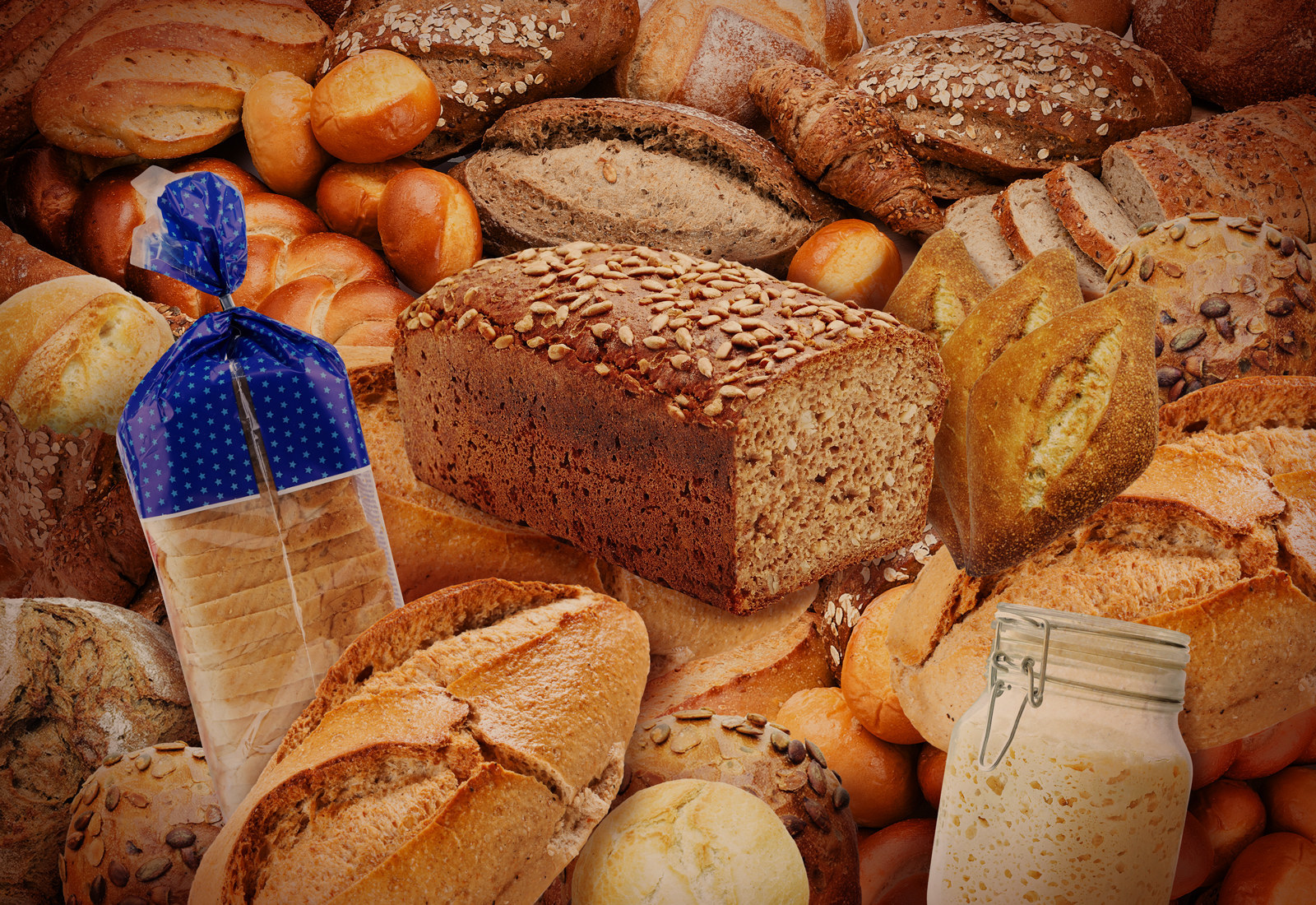As the world fell apart this year, it seemed absurd in the tensest moments that no degree of social and economic upheaval could shake our unrelenting need to eat.
As people died from the coronavirus, and died at the hands of police, as cities broke into protest, as people lost their livelihoods and their homes, we each still had to tend to our trivial but fundamental need to feed ourselves as heavy problems swirled around us, like explosives detonating outside our dining rooms. Our physical, human needs persisted in the face of tragedy, injustice, and rage.
For some, knowing where their next meal would come from became difficult. Long lines formed outside of food banks, schools, churches, restaurants, and community centers for free food. Eating became a source of anxiety. In an ongoing US Census survey, 1 in 8 people said they sometimes or often didn’t have enough to eat in the last week.
Those fortunate enough to have food-stable homes faced a different reality: trying to find pleasure in meals that mostly had to be consumed alone, at home. Despite the isolation and repetitiveness of our pandemic meals, food provided a consistent source of pleasure amid the chaos — a morning coffee, warm bread, a crisp salad, carbonara, a creamy dessert; comfort can even be found in a single microwaved hot dog. After all, what else did we have this year?
I reached out to my colleagues at BuzzFeed News to hear how their relationship with food changed this year — in these tough times, many of us, overall, remained lucky.
I also heard from readers about their experiences at food banks and schools, with Trump’s food box program, and receiving help from family and friends — I’ve included their stories as well. In a way, these daily meals reflected how much deeper inequality grew during the pandemic.
Here are some snapshots of the different ways people ate their way through 2020.
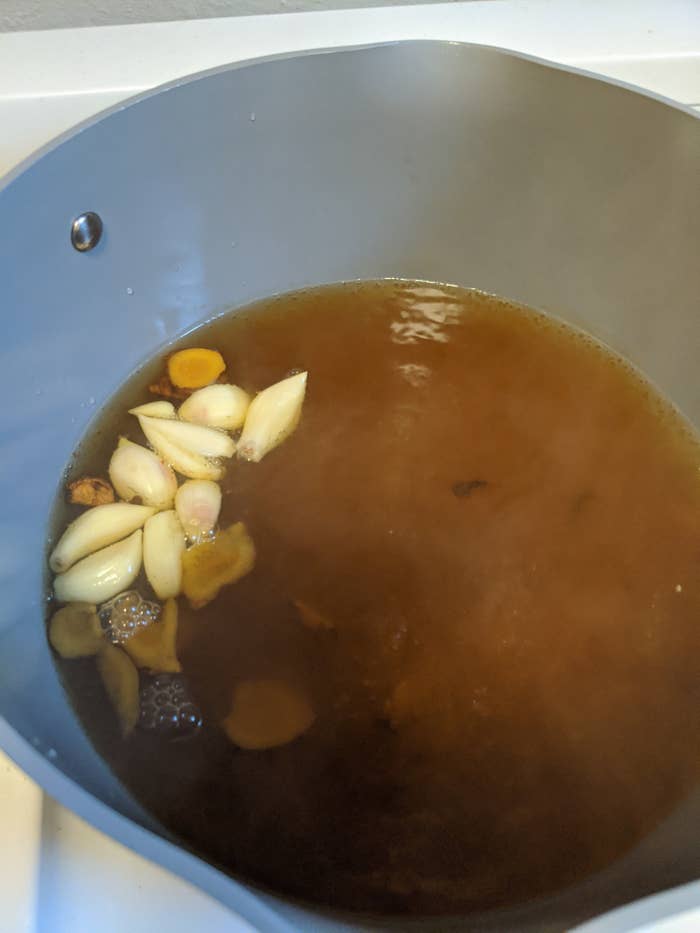
I got sick with the coronavirus in April and am still dealing with long-term symptoms. The summer of COVID-19 for me was a blur of fevers, headaches, coughing, and exhaustion. It’s been a year of eating for survival and comfort, seeking strength from my food while spending minimal energy on it. I did things I never imagined I would do, that I’m still not proud of: ridiculous meal kit services, premade canned coffees, and presliced and prediced foods. I recognize how lucky I am to have been able to afford these shortcuts. That only adds to my feeling of how ridiculous they are. I’ve now moved on to things I can throw in my Instant Pot, which basically means soups. There’s one chicken noodle soup I’ve made three times in the past month.
In a year of eating disappointments, there was one wonderful moment that will stay with me. A few weeks into my illness, I made an ayurvedic brew that was deliciously pungent — it included many cloves of garlic and several other ingredients bubbling into a deep ochre–colored tonic, drunk hot like a tea. The recipe came from my friend Isha’s amma, who got it from a guru in India. It was a real solid slap in the face to any malaise. The aroma filled the house for days. It didn’t cure my COVID-19, obviously, but it did make me feel a little more alive — something none of the other half-baked things that have come out of my kitchen did for me in 2020. —Nidhi Prakash

I am sorry. The microwaved hot dog is my great lunch shame. It is also the pandemic-inspired “innovation” of which I am most proud. Discovered in one of those need-to-eat-something-before-my-next-video-meeting-and-all-we-have-is-a-single-hot-dog moments in the early days of the pandemic, a flaccid frankfurter, wrapped in the single paper towel out of which it will be eaten after a brief microwaving has become for me a regular thing. Lunch in under a minute, satiety in seconds. Poet T.S. Eliot coined the term “objective correlative” to describe an object or set of events that are the “formula of that particular emotion.” For me, the microwaved hotdog is an objective correlative for lunchtime relief in the insanity of the current moment, a modicum of comfort in a sad little sausage. —John Paczkowski
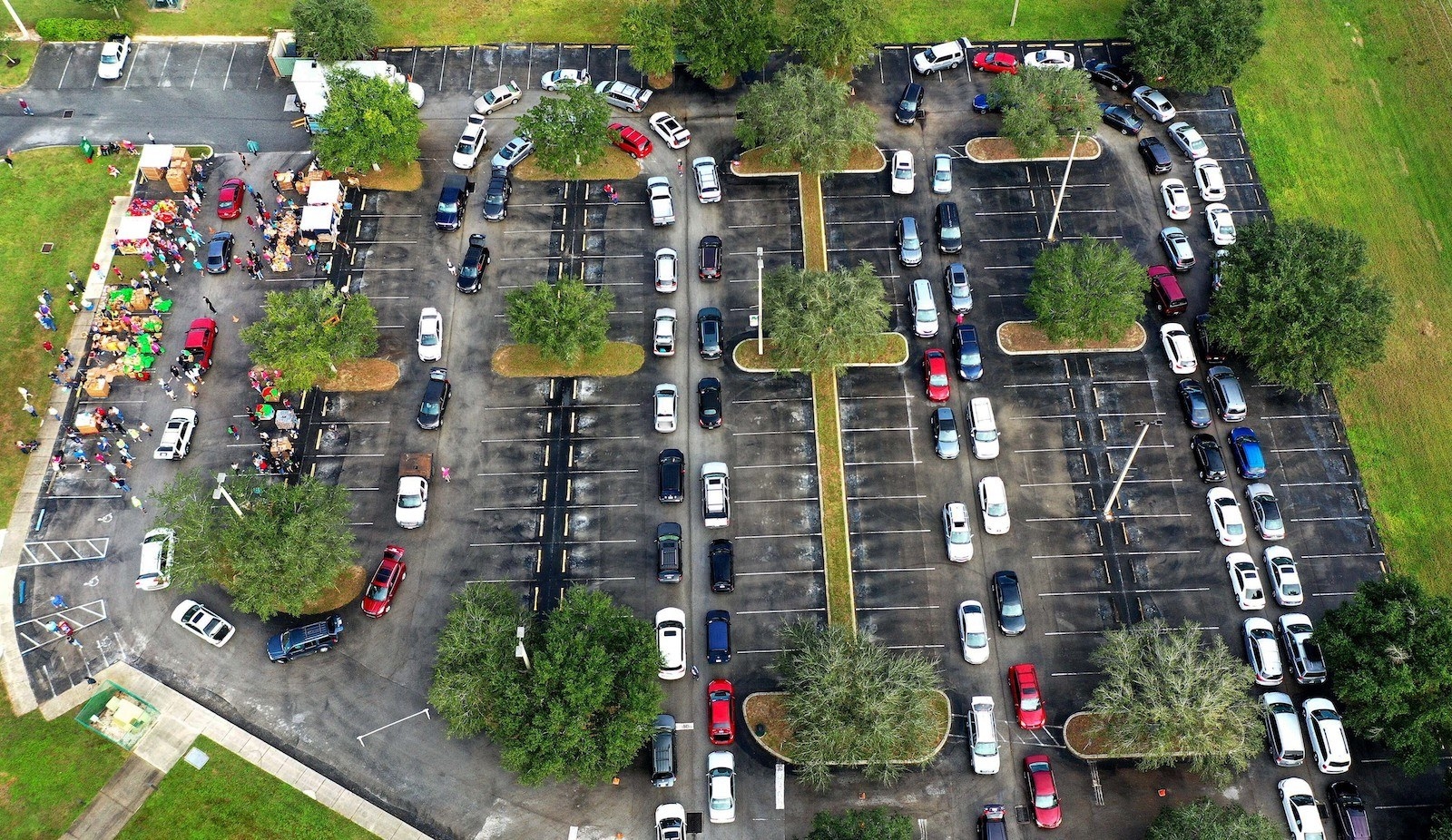
I’ve lost one-third of my overall income due to the closures, lockdowns, and restrictions. Several churches in Prince George’s County have food distributions every Saturday. When the shutdowns first started in March, the churches, in partnership with local food banks, would distribute a good assortment of canned goods, breads, rice, pastas, and locally sourced fruits and vegetables. But starting a few months ago, some churches switched over to the “Trump food boxes” that include only onions and potatoes that are mostly near end of life, a few packs of hot dogs, blocks of unlabeled cheese, a milk gallon, and multiple packages of yogurts and cottage cheese. The Trump boxes only provide hot dog lunches and, if the potatoes and onions last, side dishes for a few dinners. I used to pick up twice per month until the Trump boxes started a few months ago. I have a three-person household: myself, a son in elementary school, and a son in college. It’s unhealthy to feed children hot dogs every day. The lines have gotten longer, but with improved traffic management, waits have improved. Now I’m in and out in under an hour. —Lynn in Maryland
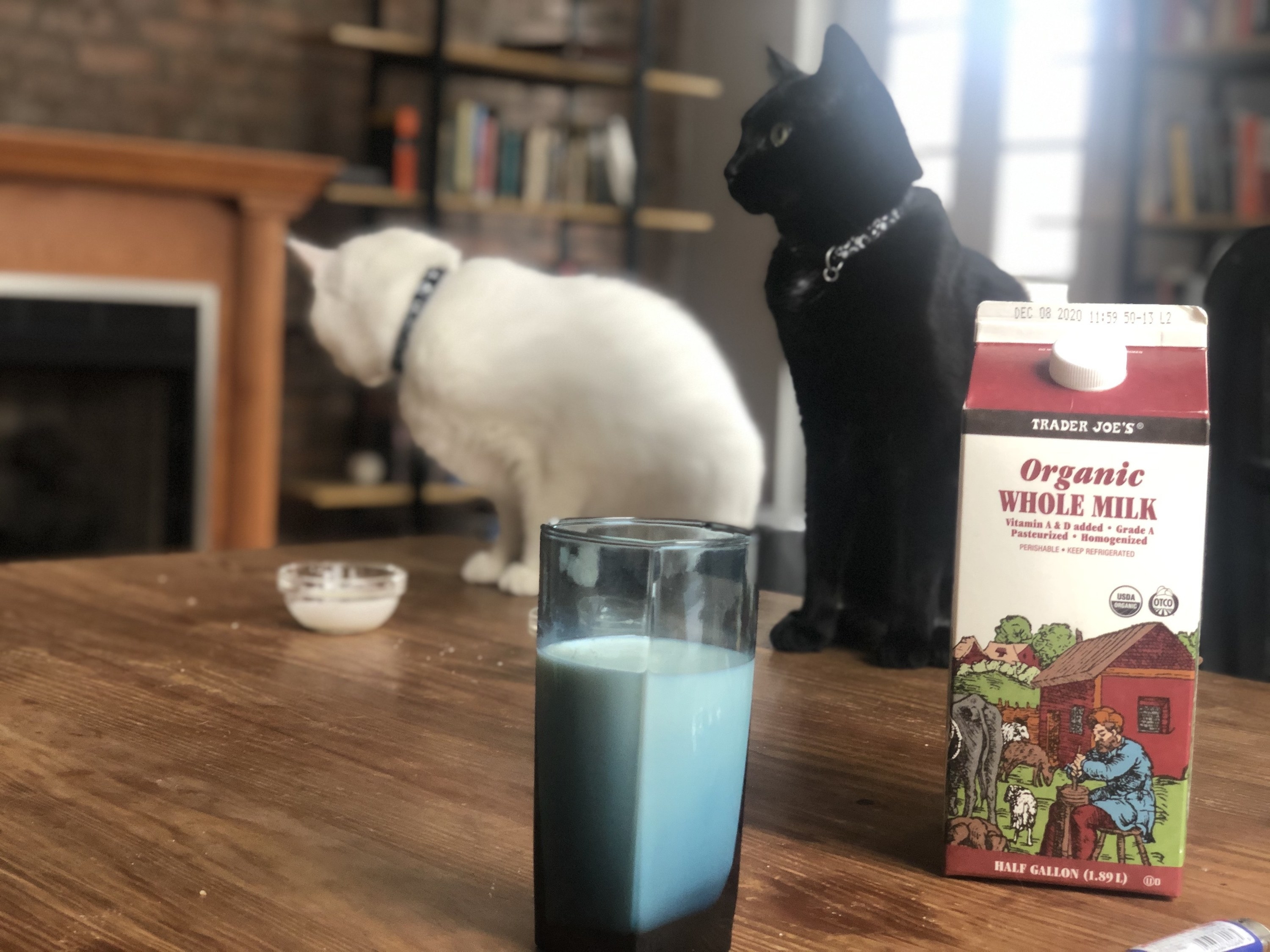
I kept a list of all the recipes I made at home from scratch (one of my New Year's resolutions was to cook a new recipe every week), but eventually I folded, ordered a lot of Soylent near the beginning of the pandemic, made a lot of smoothies, and eventually just drank milk as a substitute for actual food. And when I didn’t have an appetite, I listened to a podcast about chain restaurants to move myself to think about food! I have a small mini fridge in my studio apartment that’s too small to fit a full gallon, but I am able to fit four half gallons if I lay them flat.
I love to cook. It’s how I deal with stress and how I care for people. Quarantine has forced me to cook more than I ever have before, and since I moved in with my boyfriend in November, I’m now cooking for two for at least one meal every day. Like everything else now, it can sometimes feel overwhelming, but I still find a lot of solace in cooking. It gives me control in a world that feels out of control, an outlet for stress and anxiety. The most difficult parts of the pandemic have gone one of two ways in my kitchen: A daylong session making something complicated from scratch to give myself something else to think about — making pasta from scratch and turning it into an incredible, rich, almost-forget-for-a-moment-that-we’re-still-stuck-in-this-house, comforting carbonara — or, exhausted, roasting some chicken sausages with broccoli and/or brussels sprouts and some kind of starch.

Trying new foods has brought me some small joys in this pandemic: I made cod cakes from scratch (recommend!), and we drove up to Baltimore one day from DC to pick up whole crabs covered in Old Bay, which we smashed with wooden mallets in the backyard. And I’ve returned to some basics: roasted chicken, my mom’s chili, the pork carnitas that got us through election week, and beef bourguignon for when it is cold and my biggest hope for dinner is “something that will go with red wine.” And for when I just can’t: There’s a great Thai place doing takeout down the street. —Sarah Mimms
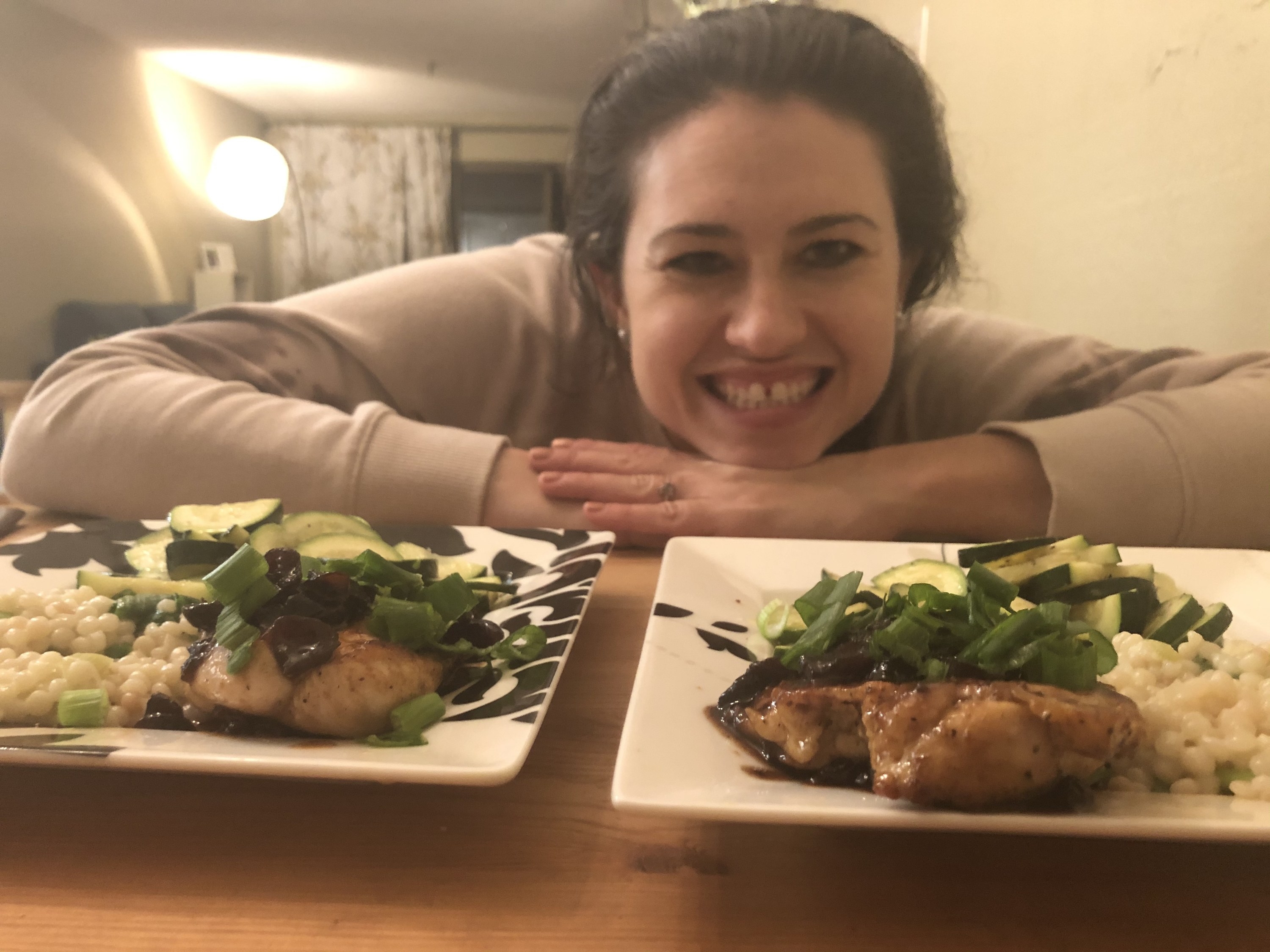
The night that Oakland went into lockdown, I made five-spice duck legs with buttered turnips and fried ginger, from a recipe by David Tanis. If civilization really was going dark, I was determined that my oven would shed a little light, and besides, I had to use those flavorless turnips. My comfort food has always been fig-on-a-plate Northern California boomer cuisine, the kind that my father cooked when we were growing up. So I've kept up my Saturday morning rendezvous with the farmers market down the block. I've spackled the inside of chocolate cakes with homemade apricot jam, hollowed out pumpkins to roast with wild rice inside, and lugged 20 pounds of tomatoes to make sauce. (There are seven quarts in my freezer if you want some.)
I know all of this, and every other thing I've cooked since lockdown started, because each night, my fiancé and self-appointed archivist, Lyz, puts a photo of dinner on her Instagram stories. At first, it felt a little type A to me — I just wanted to eat! But as the compliments and complaints (More butter! Less salt!) rolled in, I realized that it was how we could connect with our friends — it makes us both feel less lonely.
Then the miracle happened: In just the last month, my Manhattan-born future wife, for whom an oven is another shoe rack, has started to cook, too. Last night, we had chicken with cranberry sauce, and I took the photos. —Scott Lucas
Here in London, a chewy chocolate chip cookie is a serious commodity. I've always been a brown sugar–heavy kind of girl, and the crispy English biscuit — meant to "snap," as binge-watching Bake Off has taught us — just doesn't do it for me. One Sunday in the middle of lockdown, I spontaneously baked a pile of chonky American cookies and hiked a couple of hours to the apartment building of friends in South London. After I slid them in through the mail slot and they picked them up, we had an obnoxiously loud 10-minute conversation between the sidewalk and their second-story window. I can't say my chocolate chip cookies would raise any eyebrows back Stateside, but any excuse for a socially distanced catch-up is good enough for me. —Megha Rajagopalan
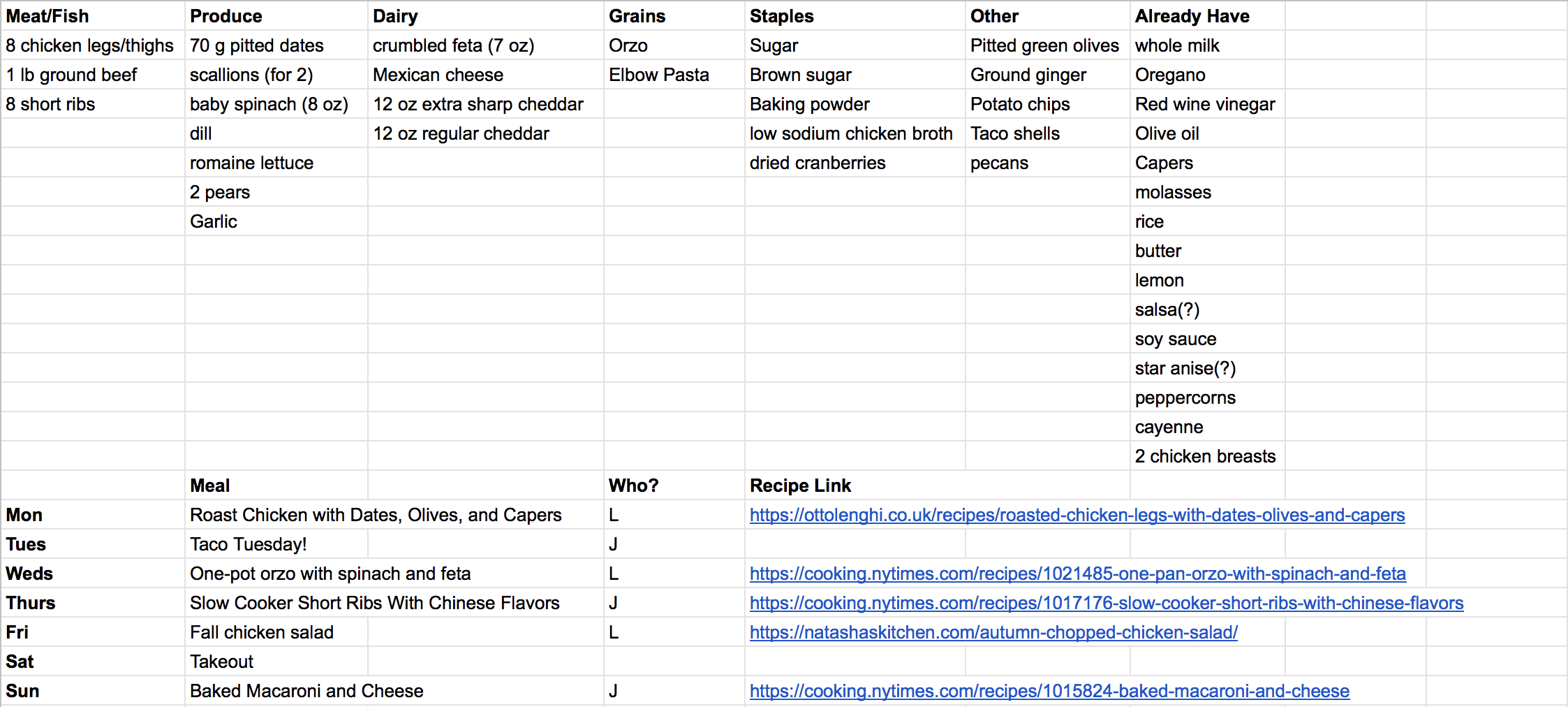
My wife and I started a meal-planning spreadsheet in January (thanks to a New Year’s resolution we actually kept). We have weeks from the beginning of the year with blank cells when we ate dinner out with friends or played board games at a bar, but come March those disappear. As New York retreated into lockdown, we started cooking six nights a week. The hour each Thursday night we spent planning meant not thinking about COVID, but instead how to fill six dinners for two and which ingredients needed to go into our columns for meat/fish, produce, dairy, grains, and staples. We both love trying new recipes, and while many are variations on a theme (so many chicken thighs), there are some pandemic favorites like King Arthur’s Crispy Cheesy Pan Pizza and the peanut noodle recipe from my mom. There are also the special meals we’ve made for the holidays that we’ve celebrated at home, like the Alison Roman short ribs we made for Passover. Or the slightly more complicated meals we made for no particular reason at all, like May 10, when we cooked my family’s recipe for eggplant parmigiana. It’s all in the 40-plus tabs of our spreadsheet, a record of everything we ate during this pandemic year. We will definitely stick to it post-COVID. It just makes planning the week so much easier. —John Templon
My roommate was laid off during the pandemic and was out of work until about a month ago. I’m a full-time student, and I’m really high-risk. I haven’t been able to work enough to pay for both of us. We go to the food bank once a week, every Sunday. They give each household one box of food. It’s not enough to feed me and my roommate, so I’m honestly not sure what families are doing now that schools are shut down again. The lines got shorter over the summer when things started to open back up again, but this most recent weekend, the food bank line was so long we almost weren’t able to get any food. We have to supplement by pooling our money with a couple of college friends to try to buy bulk groceries. We also get mutual aid delivery every two to three weeks. They distribute mostly fruits and vegetables, and donated items from grocery stores. For example, the Sprouts [Farmers Market] near here donates breads that are past their sell-by date. —Robin in Denver
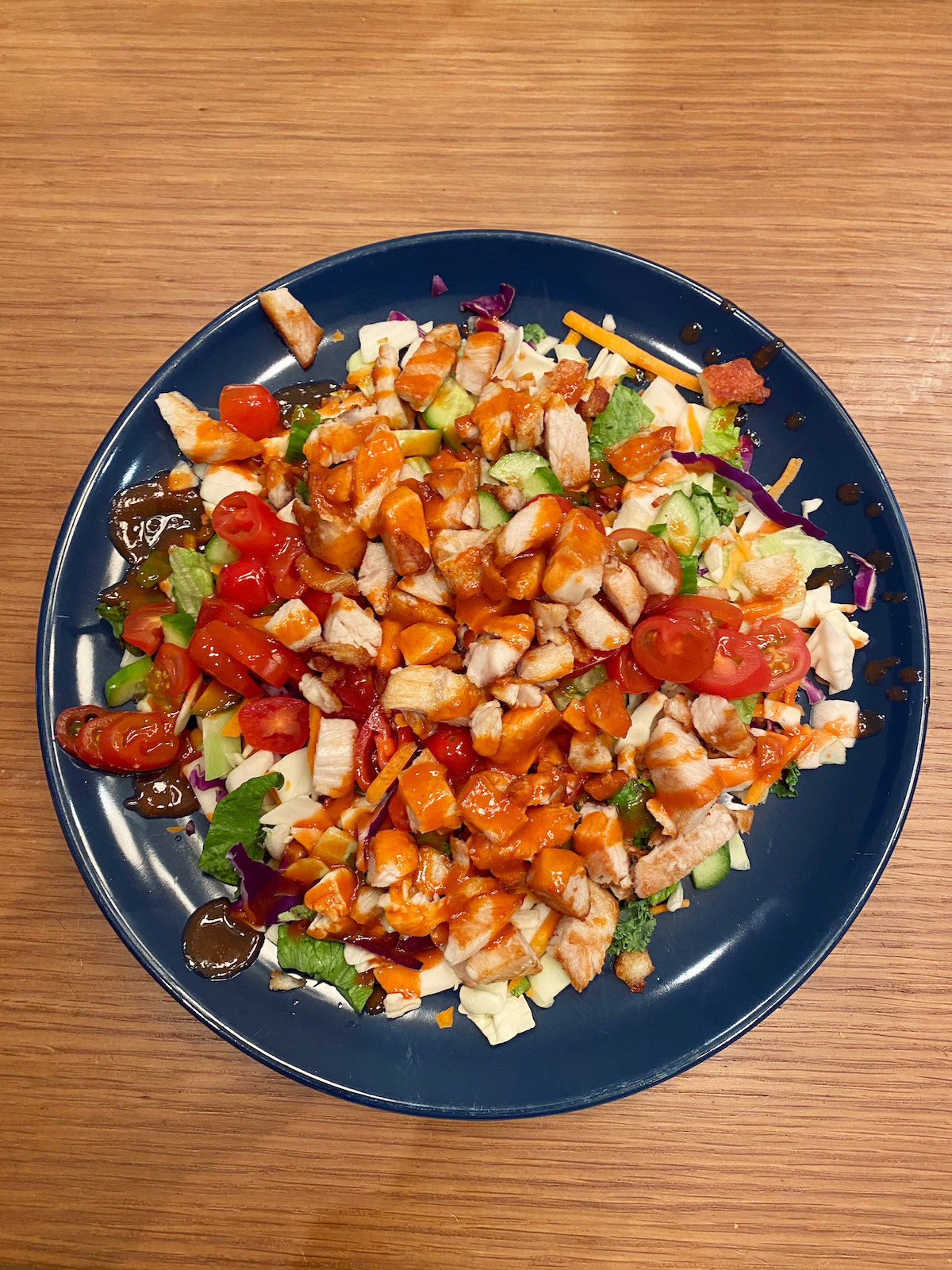
I eat a salad for lunch every day. A healthy salad. The same salad. It’s my pandemic salad. During the first months of COVID-19, I worked from home and homeschooled two kids. I made them lunch every day. Different lunches. Sandwiches, soups, chicken fingers, hot dogs, burgers. Me? I ate my pandemic salad. Mixed greens, eight sliced cherry tomatoes, a quarter of a sliced cucumber, three sliced pickled green beans, 6 ounces of grilled turkey or chicken breast, and Frank's RedHot Chile 'n Lime hot sauce. At noon sharp, because I don’t eat breakfast. Then I have fruit. That’s lunch, every day, for 10 months. I was a salad guy before the coronavirus, but it varied, and it was less healthy. The pandemic put so many things in flux, but it clarified lunch. My pandemic salad is a bedrock of health and consistency in troubled times. Things can change, but the salad remains. —Craig Silverman
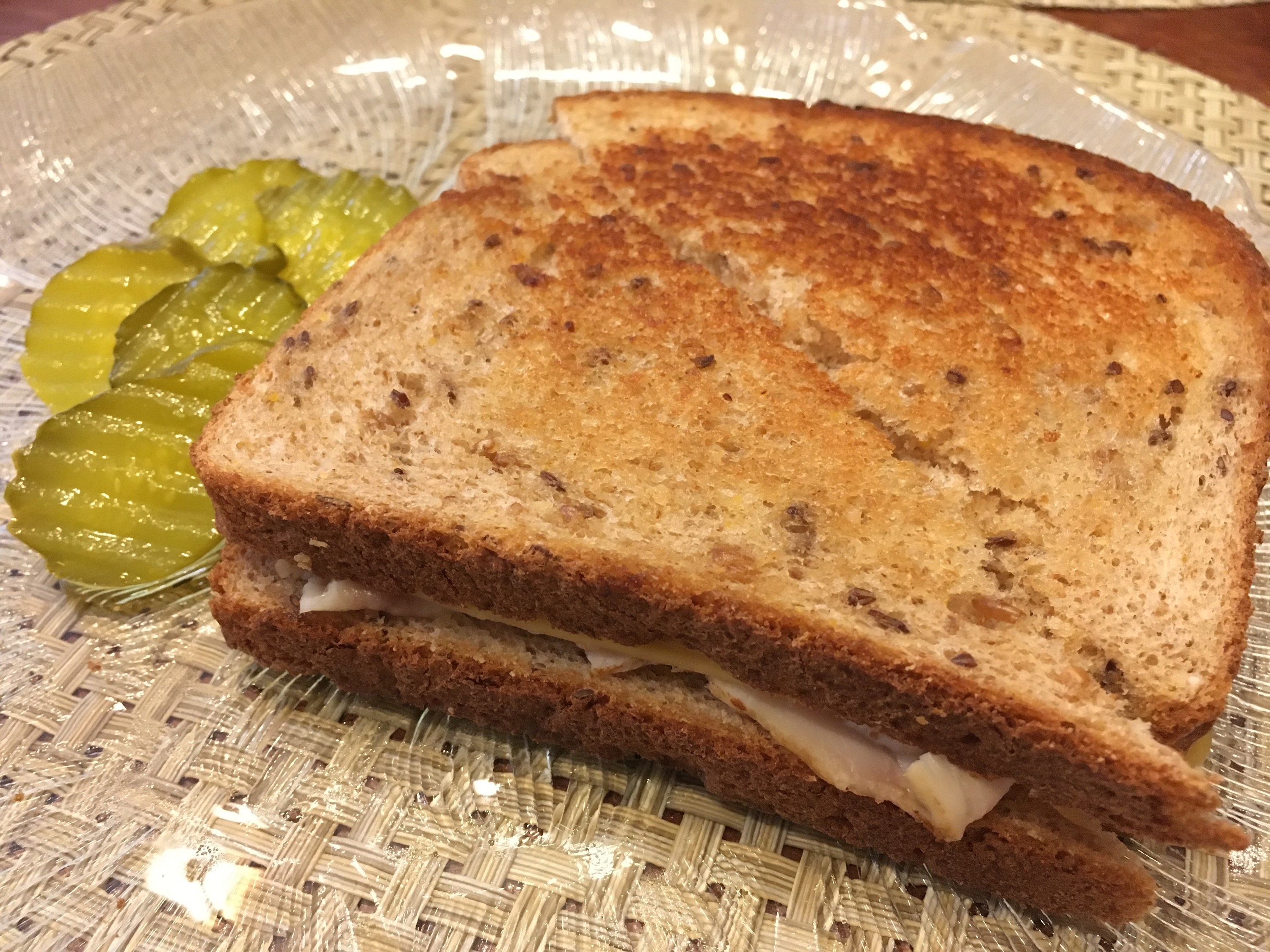
The advice I got early on in the pandemic about surviving working from home with two young kids was to automate meals as much as possible so it was always clear who would be responsible for breakfast, lunch, and dinner, and we wouldn’t be caught staring at an empty fridge when feeding time came around again and everyone was hungry. I am grateful my husband volunteered for this job. He can be a fantastic cook, but since he is also working from home, his more impressive dishes have not been a hallmark of our pandemic diet. What his particular version of automated meal planning evolved into was peanut butter toast every morning, grilled cheese (maybe with a slice of deli meat) with chips and a pickle every lunch, and pasta with red sauce and sausage every dinner, Monday to Friday, for the last eight months. The pandemic has shown me what a literal never-ending bowl of pasta feels like: not particularly inspired, but satisfying nonetheless. And ultimately, I know it’s my husband’s way of taking care of us. It’s hard for me not to crave more variety — I love eating and worked as a food reporter for many years. But I am too exhausted to cook myself, so like everything else this year, this pleasure was just another sacrifice made in an unrelenting effort to just get through. Thankfully, I haven’t gotten tired of all the coffee yet. —Venessa Wong
My household is one adult and three children. As a result of the pandemic, I was furloughed in March. As of July 31, I became officially unemployed and, unfortunately, am still unemployed. I get food from various sources. Family and friends who receive food boxes have been sharing with me biweekly: applesauce, cereals, canned beans, canned vegetables, canned fruit, canned soups, rice. There have also been snack items like single-serve cookies and raisins. Occasionally, I will get dairy-free milk or juice. Depending on how bare my cabinets start to look, I will also go pick up food from the DOE food programs. For lunch, they usually serve a sandwich with milk, a healthy side, and a snack. For breakfast, we may get a muffin or cereal and the occasional fresh fruit or yogurt. The portions are sufficient as my children are young. —Leslie in New York City
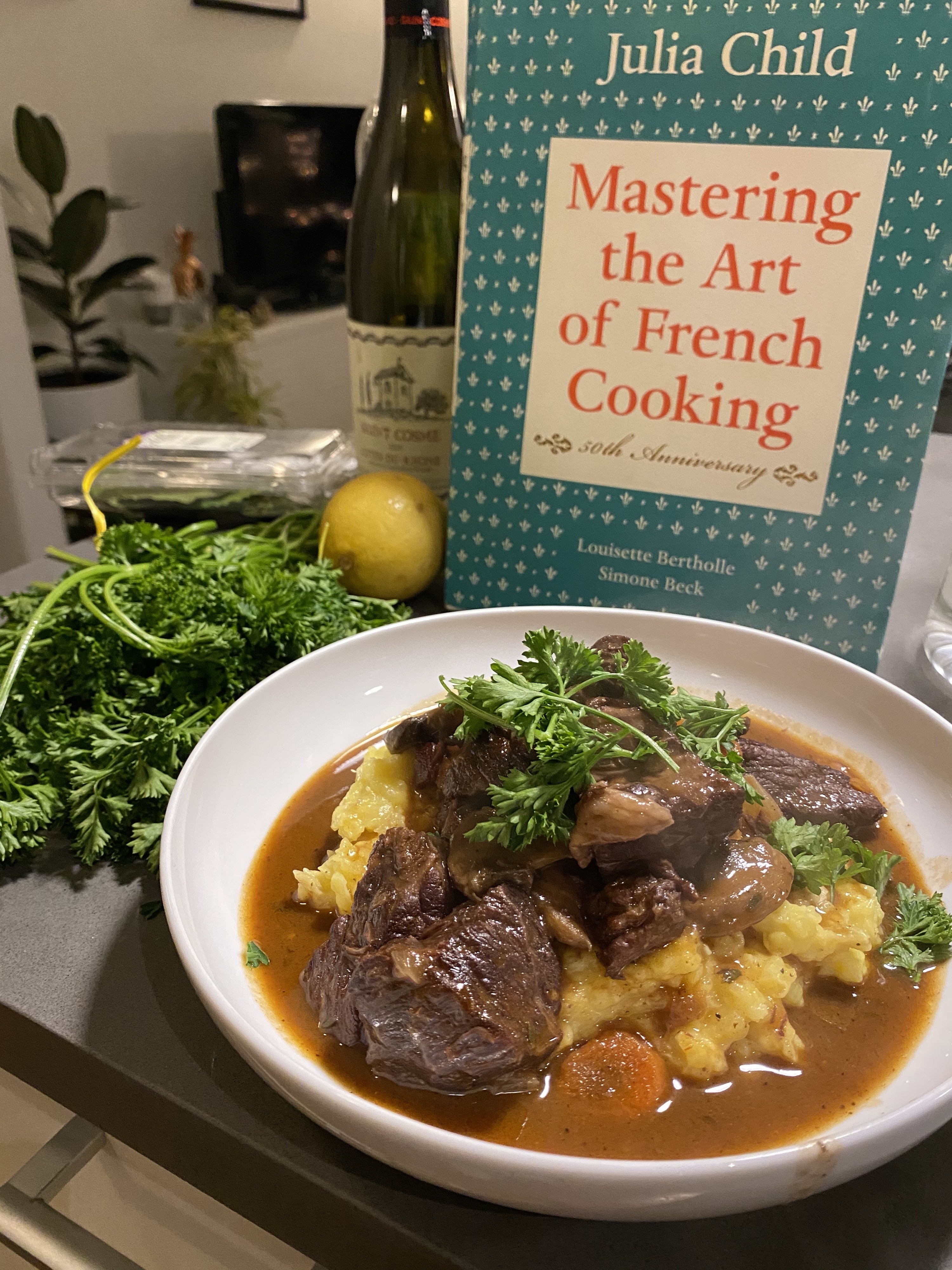
At the start of the year, I finally forked out for a subscription to the NYT Cooking app and set myself a goal: get better at cooking. To be clear, I wasn’t a bad cook, just a boring one. Quarantined at home in the spring, I kept part of my sanity by testing recipes nightly and uploading the results to Instagram. My grocery lists were extensive and involved several days’ worth of meals. I made curries and tarts and pastas and sauces. I conquered Julia Child’s beef bourguignon. I started reading cooking books — actually reading them, not just skimming through recipes and pictures — and I learned about the science of food and taste and cooking. It was a way to pass the days alone in our apartment, of course, but it was also a creative outlet. With theaters closed and concerts canceled, food was an art form that was all mine. As all the days bled together in a sea of sweatpants and at-home workouts, I could take comfort that at least my meals provided a sense of variety. Each day, we had one question that we could ask ourselves that wasn’t scary or overwhelming but felt reassuring and achievable: “What’s for dinner?” —David Mack
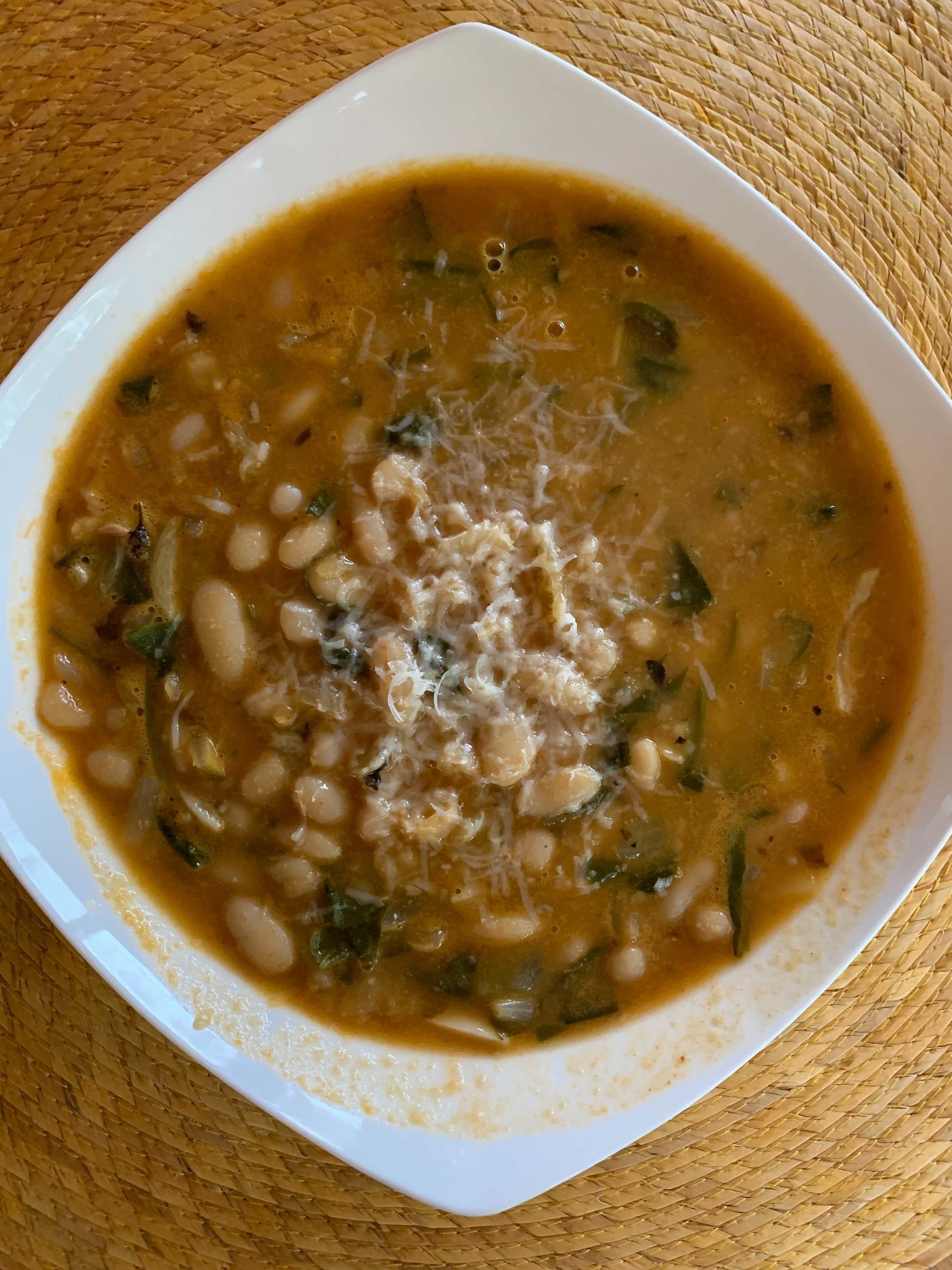
At some point mid-April, after stocking up on toilet paper and diapers, my perilous attempt to prepare for the future led me to beans. And, since it seemed like time to live it up if the world was ending, heirloom beans. On fancy days, I’ve been whipping up lima bean spread with za'atar or the best hummus ever. On can’t-keep-it-together days, these cranberry beans make a melt-in-your-mouth bean and cheese burrito. But maybe the greatest thing about ordering beans is that the only people who leave reviews on an heirloom bean website are kind and extremely enthusiastic. It’s the perfect post-Twitter shower. “Oh my these are delicious,” wrote one reviewer. “Heaven: these beans are the best,” said another. “They are adorable—so let's just say that up front!” an enthusiastic consumer cooed. I’d also argue that there’s no time like a pandemic to confront your bean-induced fart fears, as long as everyone else you’re holed up with is on board. —Kendall Taggart

I’ve never been a star baker. But then in 2020, I got married (in my living room) and suddenly had a new collection of baking tools and a lot of extra time to use them. For my first bake, I whipped up a banana cream pie completely from scratch. It was nearly perfect. The custard set nicely and tasted delicious despite having used the wrong measuring spoon for the vanilla extract. Things didn’t go as smoothly when I tried to re-create it for our election night dessert. Maybe it was the stress of the election or beginner’s luck, but what I ended up with not once, BUT TWICE (!) was a banana cream pie soup. I’ve since realized how difficult it is to make custard and have tried not to beat myself up too much about it. For now, I’m focusing on mastering some easier bakes, like banana bread and pumpkin pie. Each pie crust I make is better than the last, and I’m starting to test out my own recipes. At some point, I will return to the banana cream pie and work on it until I get the custard right. If the pandemic has taught me anything about life and baking, it’s OK to struggle. —Stephanie K. Baer
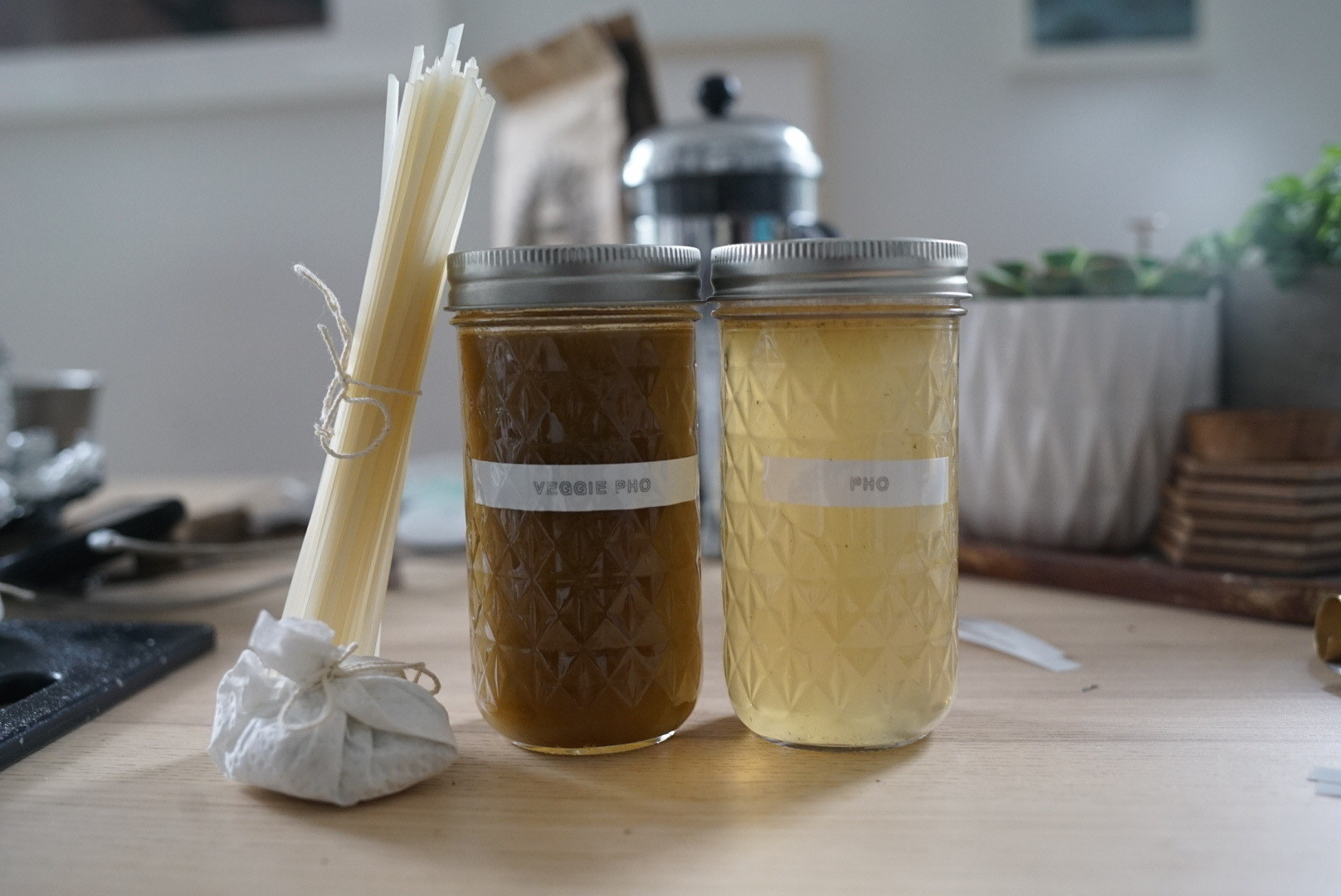
Two weeks into the New York City COVID-19 lockdown, I was celebrating my 35th birthday by cooking a massive pot of the Vietnamese noodle soup. Sure, it was a way to treat myself. But perhaps more importantly, I made a gallon of golden broth so I could feed my friends. Pho has always been a hug in a tummy from the days when my mom first fed it to me as a toddler. When she taught me how to make it half a decade ago, I felt like I learned how to heal myself. I slowly filled multiple mason jars with the star anise–infused liquid, portioned off some noodles that I tied up with a string, filled some ziplock bags with herbs and chicken, and biked this ready-made meal from one house to another. By the evening, we had a communal virtual meal together, and for the first time since we had been thrust into this pandemic, I felt a little bit whole again. As I watched the world go by through the screen in my palm this spring, I saw so many other folks learn to re-create their parents’ culinary alchemy at home, too. We eat every day but a lot of us may have experienced a lot of our food in a way that can be devoid of culture, of history and, most importantly, of the stories that each meal carries with it. But what COVID may have helped some of us do, is to return to a more familial and intimate understanding of food. —Lam Thuy Vo
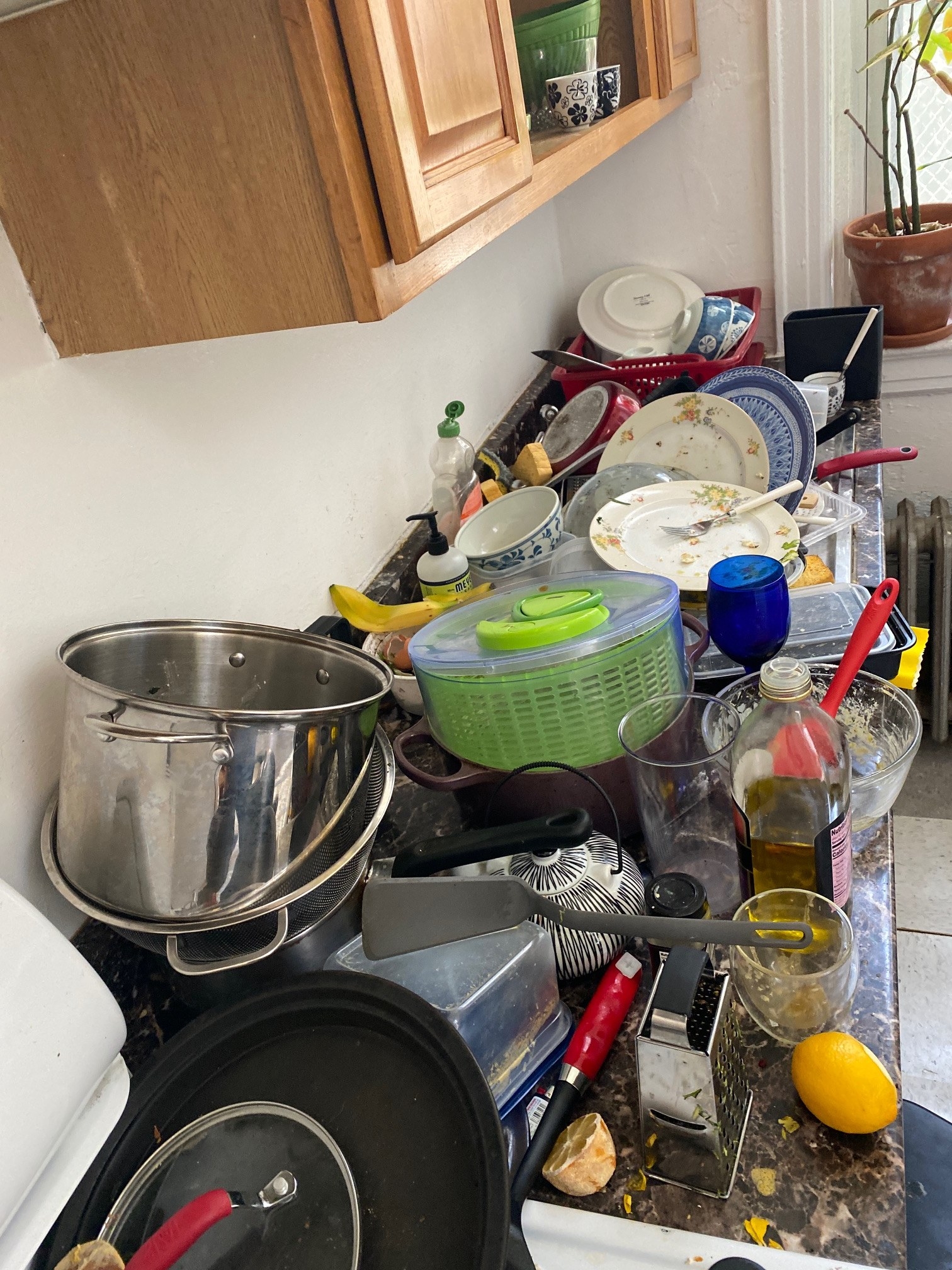
Cooking for myself and others has long been one of the most constant pleasures of my life — unfortunately the inevitable flip side of that, dishes, became my 2020 curse. One of the few quarantine highlights has been the breakfast I cook for myself every morning. Sometimes it’s omelets. A Dutch baby is always fun. There was a great stage of fried mushrooms on top of ricotta-covered sourdough. Lately it’s been breakfast sandwiches. Delicious! But suddenly a pile of dishes before my day has even started. Then lunch — maybe ramen with egg and greens, or leftovers heated up on the stove because I don’t have a microwave, or an easy pasta. Cups of tea during the day. Perhaps a snack of banana bread. Suddenly my desk — which is now in my kitchen, because it’s the only spot in the apartment where I can sit in front of a window — is surrounded by detritus. Then it’s time to cook dinner and roast something delicious and chop up herbs and have a wine or maybe make a cocktail. Then I take one look at the huge stack of dishes from my day.
On April 26, I bought a secondhand portable dishwasher off Craigslist for $250. For one glorious month, I stacked this giant monstrosity, rolled it into the middle of the kitchen — it had to connect to the power and the tap — and left it to hum and clean. A weight felt lifted. “Most effective retail therapy of my life!” I declared. A friend drew a picture of me flying on it for my birthday. Then one day, it stopped completely mid-wash. I went back and forth between getting this one fixed, buying another used one, or buying a new dishwasher even though my landlord won’t pay for it. When the repair person told me the repairs would cost as much as a new dishwasher, I burst into tears. Years of living overseas taught me to spend money on experiences, not items, but this year also taught me that surrounding yourself with things that make you feel happy is an experience in itself. Turns out my happiness will cost about $550, for the cheapest model. —Amber Jamieson
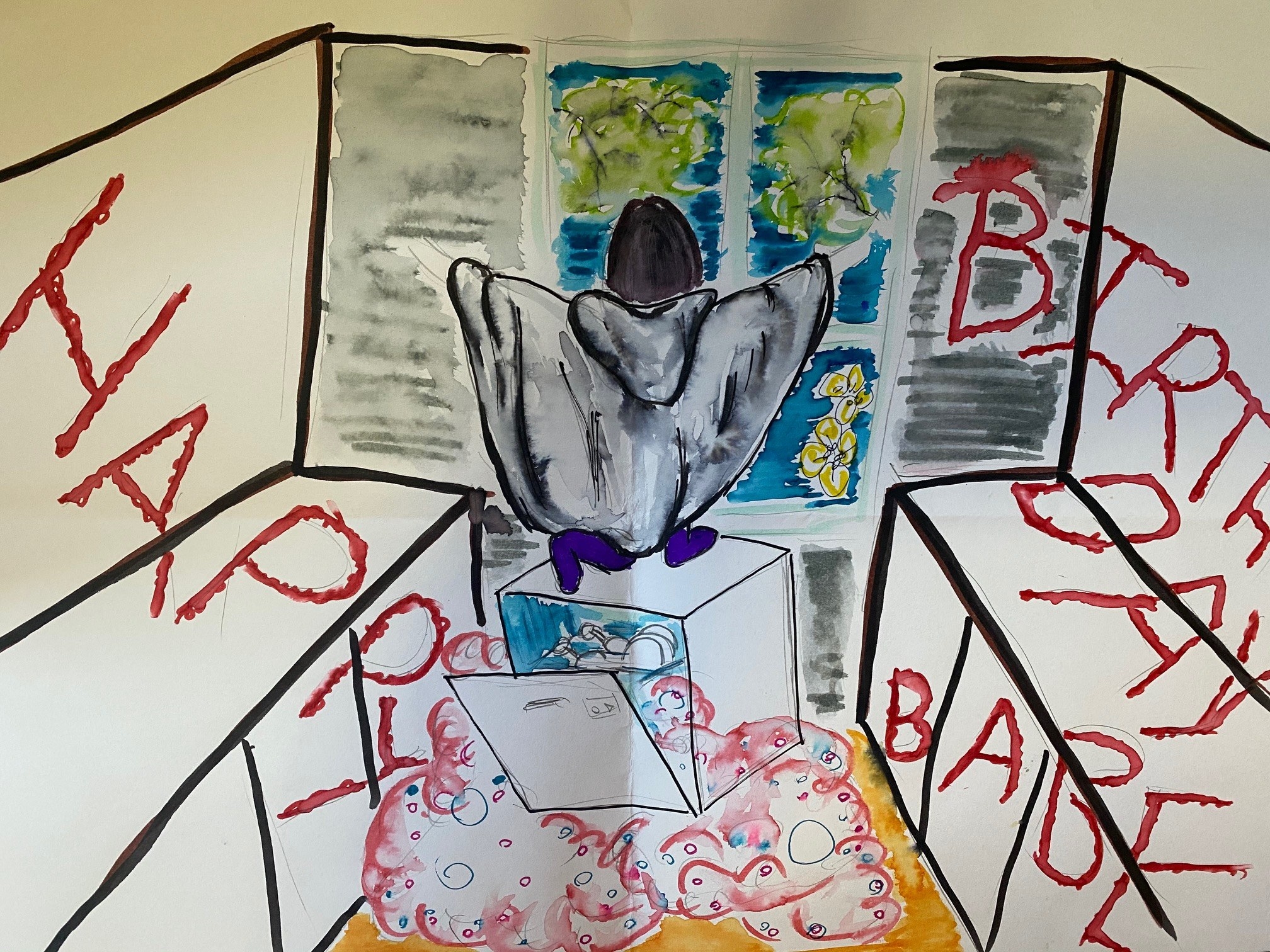
For years I’ve been a huge advocate against food waste. I truly hate when I have to throw out a bunch of parsley that has gone bad or eggs that have expired. I always prided myself in finding creative ways to make sure I used up every last scrap. The pandemic showed me that the thing I thought I was good at, well, I was actually quite terrible at — but it also afforded me the opportunity to be better. At the height of the pandemic in NYC, my husband and I limited our trip to the store to once every two weeks. That’s breakfast, lunch, and dinner, for two people, for two weeks: 84 meals. The kind of meal planning required to shop for those two weeks really allowed me to focus and improve on not wasting food. The skills I’ve learned in the past year on how to properly plan meals and how to improvise and create fun dishes when all I have left in my fridge are a hodgepodge of ingredients are invaluable. —Mary Ann Georgantopoulos
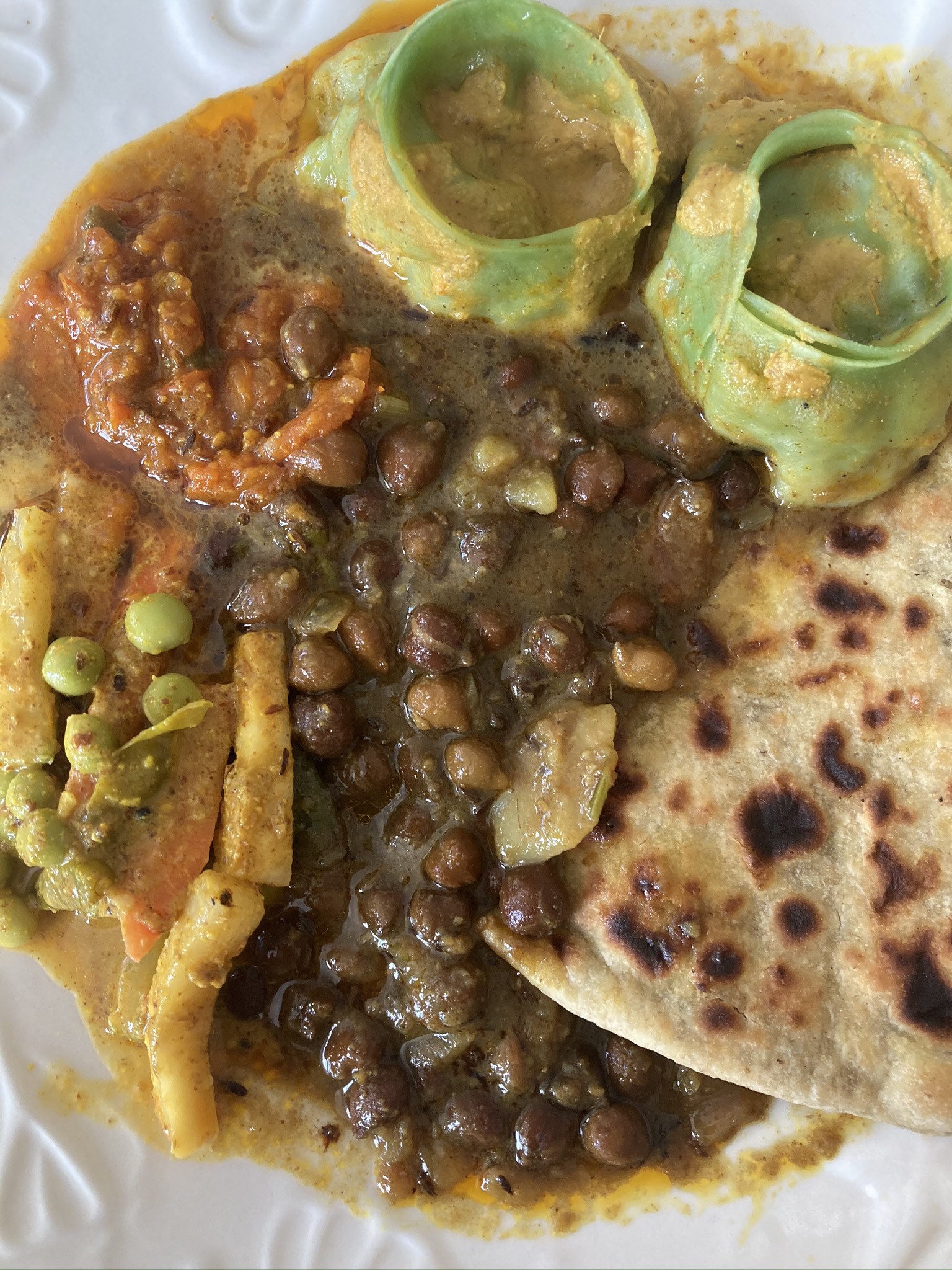
When BuzzFeed banished us from the office in early March, I thought of all the ways I would use that time spent not commuting to work: exercise more, read more, nap more, cook more. But most importantly, I would have time for breakfast — the elaborate, sit-down kind of breakfast — again. Breakfast is my favorite meal at my favorite time of day, and I am one of the smart people who is correct that all food is and can be breakfast food: juicy-ass tomatoes in the summer, cozy noodle soups on a rainy day, bread that you didn’t realize was moldy until it was too late, leftovers of all stripes (rice and beans, curry and sourdough toast, mapo tofu (though I do not recommend this if you have a busy morning), and even that half a sandwich sitting in your backpack this morning because you forgot to put it in the fridge last night. So what if I am living in “unprecedented times,” if I don’t know when I’ll get to see my family IRL again, if I’m a mental and emotional wreck, if I am just one health scare away from going fully broke? Every day I wake up and think, At least — at the very least — I will have a nice breakfast today. —Clarissa-Jan Lim
The first time I walked into Ossington Stop, a Toronto bar that’s home to everyone in the Eastern European diaspora, I was suspicious. As an immigrant from Ukraine, I’m more used to Russian or Ukrainian cultures being caricatured than honored. It was the smell of the borsch cooking on the stove and a sign that said “Go fuck yourself” in Russian that warmed me up to the place. When the pandemic hit, its food became a small oasis among the grim reality. 2020 is the first time in 18 years I couldn’t travel home to Kyiv to see my family. The loss hit me hard, especially my inability to see my grandma, who would overflow the table with soups, potatoes, breads, salads, pickles, meats, and compote while we caught up on the year that had passed. Ossington Stop became a stand-in for my grandma's kitchen. Every couple of weeks I’d order almost everything from the menu. Borsch? Check. Bread? Check. Salo? Every time it was in stock. Khinkali, the soup-filled Georgian dumplings? By the dozens, so I could boil them over lunch, sour cream and hot sauce on the side. It became a way to feel at home without being home, a little reminder that I'll be back in Kyiv too. I told the owner, Dennis, that his borsch smelled like home. “It’s not going to be like your grandma’s borsch,” he said, in Russian, “but we try.” —Jane Lytvynenko ●
This story is part of our series on the year 2020. To read more, click here.

